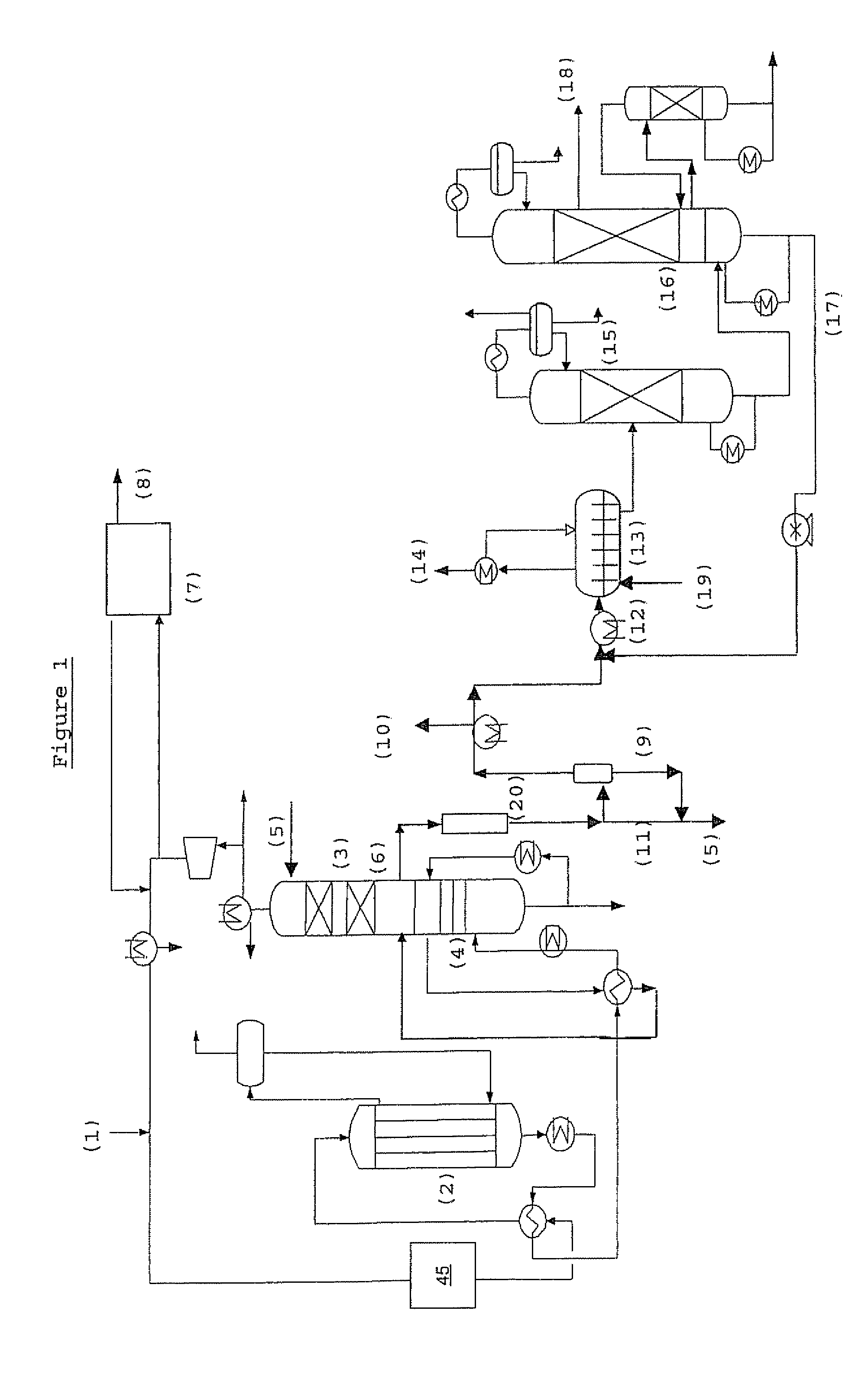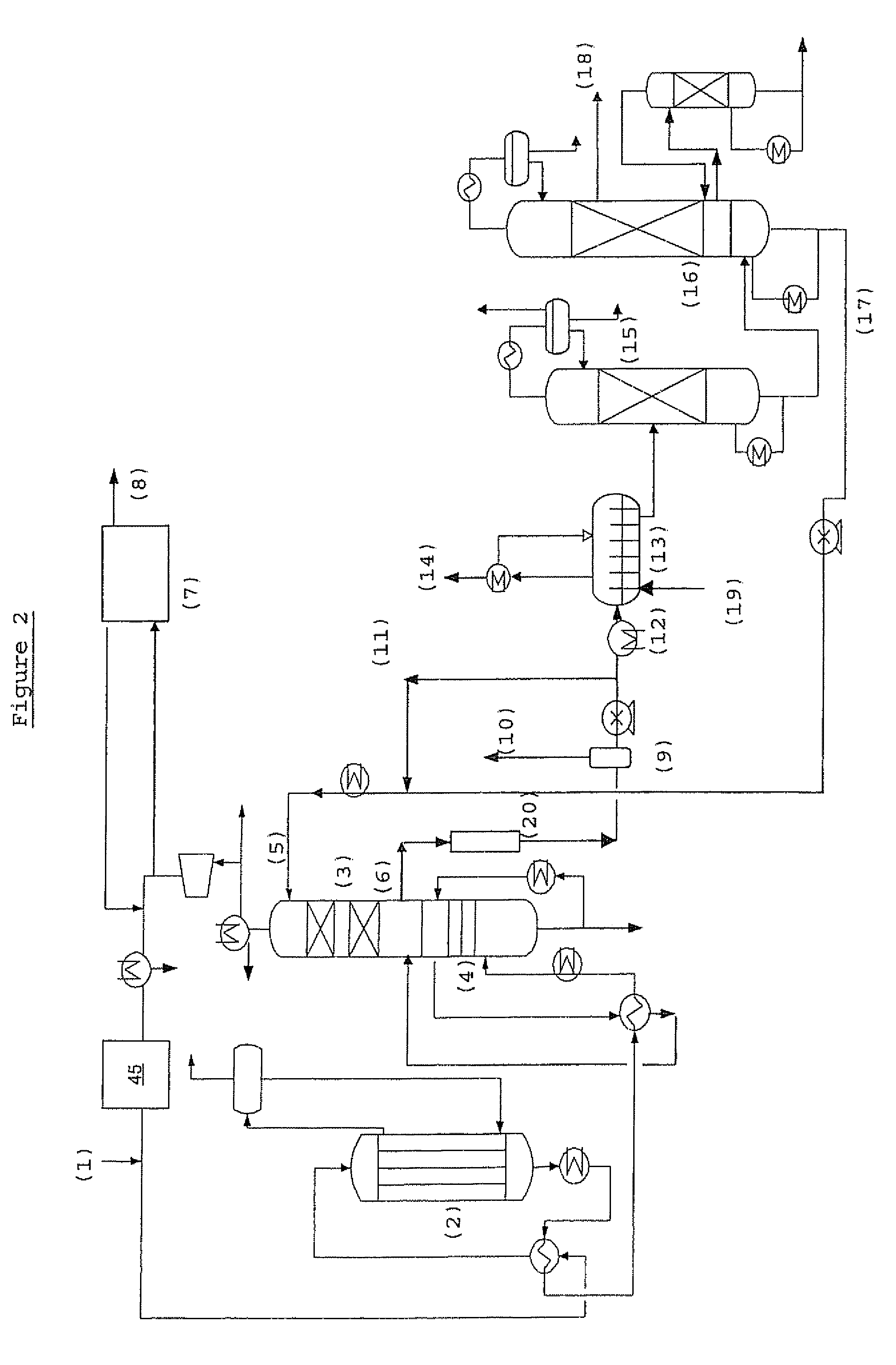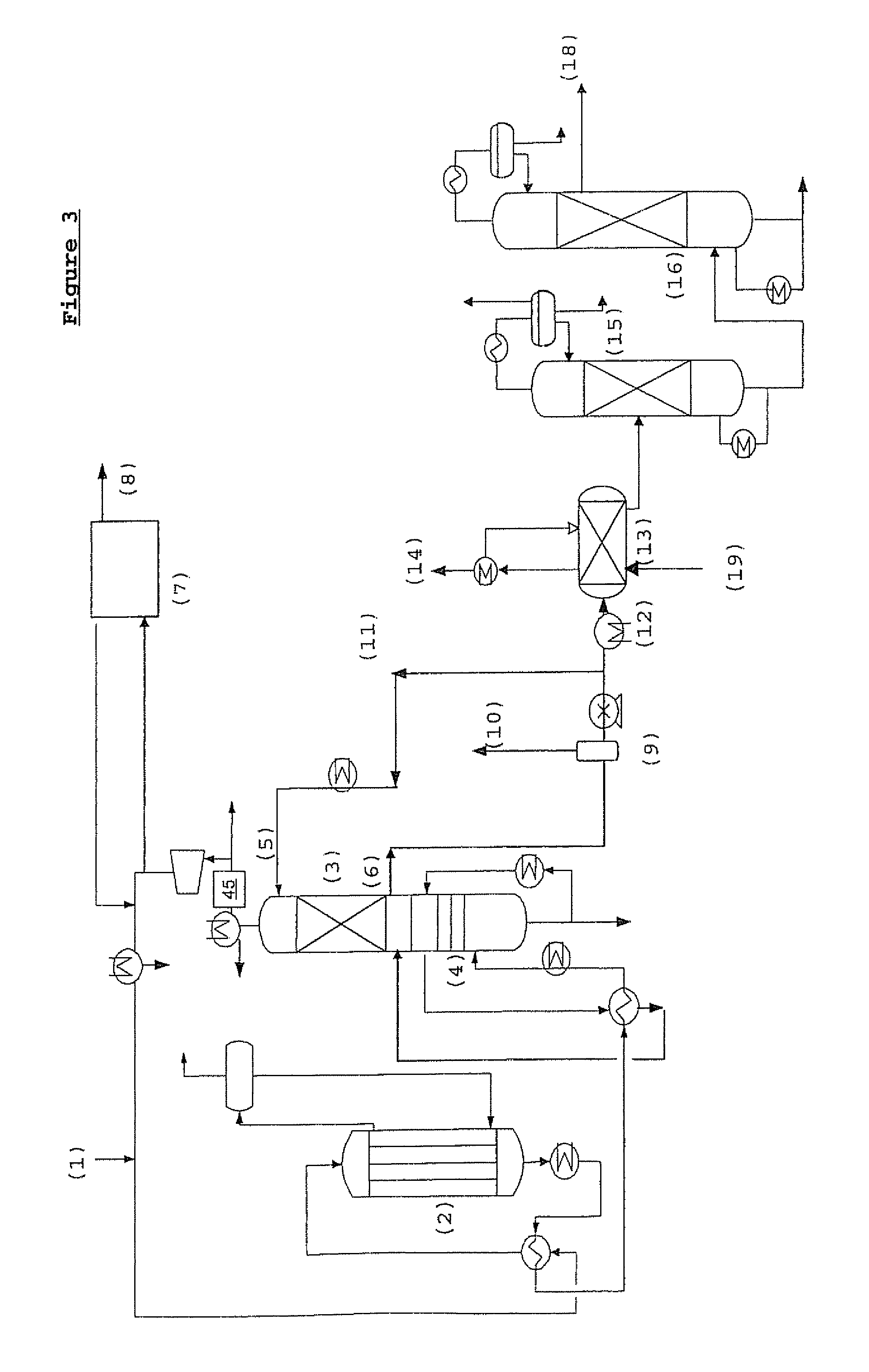Process for the preparation of an alkylene carbonate and an alkylene glycol
a technology which is applied in the field of process for the preparation of alkylene carbonate and alkylene glycol, can solve the problems of introducing bromide-containing impurities into the recycle gas stream, etc., and achieving the effects of reducing the quantity of bromide-containing impurities, promoting carboxylation, and reducing the performance of the epoxidation catalys
- Summary
- Abstract
- Description
- Claims
- Application Information
AI Technical Summary
Benefits of technology
Problems solved by technology
Method used
Image
Examples
example 1
[0159]Guard beds were used in these experiments to block gas-phase organic bromides. Several materials were used but the one which performed the best was a material comprised of silver and potassium supported on alumina. The guard beds were placed in a nitrogen stream that contained 1100 ppmv methyl bromide (pressure=1 atm, T=170° C., GHSV=3200 hr−1). This environment is a more difficult environment for the blocking of organic bromides than the environment in the process of the present invention because no oxidizing agent is present in this experiment. The presence of an oxidizing agent should enhance the rate at which bromine-containing compounds react with the active surface of the guard bed material.
[0160]The experiments were carried out in a microreactor to which was delivered controlled flowrates of “stock methyl bromide” diluted with pure N2 to achieve the desired MeBr concentration (1% v MeBr, balance N2). The outlet line led to an auxiliary gas chromatograph that was configu...
PUM
| Property | Measurement | Unit |
|---|---|---|
| temperature | aaaaa | aaaaa |
| atomic number | aaaaa | aaaaa |
| atomic number | aaaaa | aaaaa |
Abstract
Description
Claims
Application Information
 Login to View More
Login to View More - R&D
- Intellectual Property
- Life Sciences
- Materials
- Tech Scout
- Unparalleled Data Quality
- Higher Quality Content
- 60% Fewer Hallucinations
Browse by: Latest US Patents, China's latest patents, Technical Efficacy Thesaurus, Application Domain, Technology Topic, Popular Technical Reports.
© 2025 PatSnap. All rights reserved.Legal|Privacy policy|Modern Slavery Act Transparency Statement|Sitemap|About US| Contact US: help@patsnap.com



